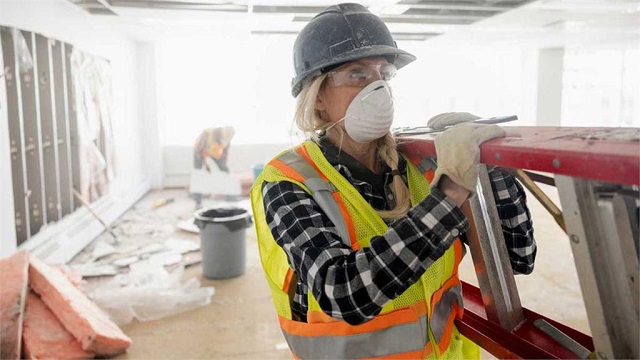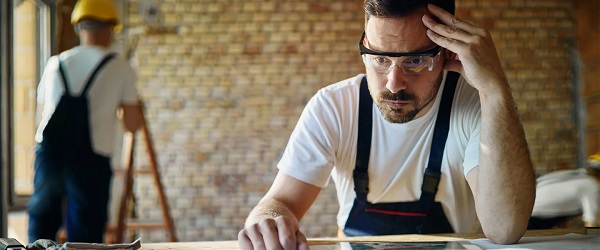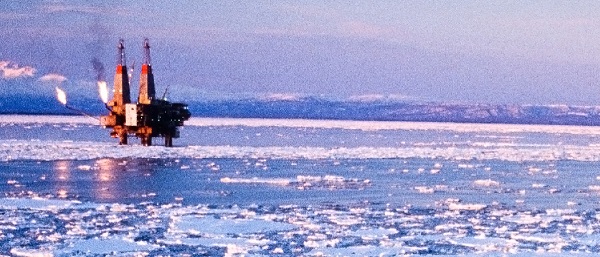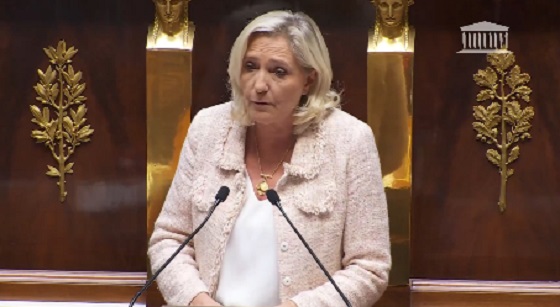Alberta
Alberta Budget 2024 – Employment

Budget 2024: Maintaining Alberta’s economic advantage
Budget 2024 is a responsible plan that maintains Alberta’s competitive advantage so businesses and industry can continue to innovate, thrive and create jobs.
Budget 2024 puts Alberta on a path of continued economic growth through funding that supports creating jobs, attracting investment and developing a skilled and diversified workforce. Strategic investments will empower job creators and innovators to invest, grow and flourish in Alberta’s diversifying economy.
“Budget 2024 reaffirms our commitment to diversify, attract new investment and provide more jobs that keep Alberta’s engine humming. Strategic investments that support the growth of Alberta cities and promote apprenticeship programming and emission reduction technology will help create more opportunities to build an even stronger Alberta.”
Alberta remains a key driver of Canada’s economic prosperity, accounting for 22 per cent of all jobs created in the country last year, despite having just 12 per cent of the population. Compared with other provinces, Alberta has the highest weekly earnings and the lowest taxes, offering many incentives to newcomers seeking a great place to call home.
To further build on these advantages, Budget 2024 introduces the Alberta is Calling attraction bonus, a $5,000 refundable tax credit aimed at attracting out-of-province workers in the skilled trades. A total of $10 million will be provided to workers.
“The Alberta is Calling attraction bonus will support our government’s commitment to build a skilled and resilient labour force that helps businesses and the economy thrive. We will continue to foster the conditions for growth to ensure Alberta remains the best place to live, work, invest, do business and raise a family.”
Budget 2024 supports the sustainable growth of Alberta’s cities and communities. In addition to $724 million in municipal infrastructure funding through the Local Government Fiscal Framework in 2024-25, Budget 2024 launches the new Local Growth and Sustainability Grant, an application-based program that provides $60 million over three years to enable municipalities to fund infrastructure that supports economic development and addresses unique and emergent needs in their communities.
“We’re pleased to see so many people choosing to move to Alberta to experience the advantages this province has to offer, thanks in part to the strong communities we are supporting through predictable, sustainable funding. We also recognize the pressure this growth can put on local communities. The Local Growth and Sustainability Grant is part of our responsible plan to support a vibrant province and help communities respond to growth opportunities and acute sustainability challenges.”
As Alberta’s economy continues to grow, so does the need to sustain a vibrant and robust workforce to meet the needs of Alberta employers. Budget 2024 addresses current and future potential labour shortages by expanding skills and knowledge in key areas.
More than $100 million in new funding for apprenticeship programs will add 3,200 seats to help meet growing demand at Alberta’s post-secondary institutions. Another $361 million from the Budget 2024 Capital Plan will build and upgrade research and learning facilities in some of the province’s world-class post-secondary institutions. Investments include $63 million to renovate and expand the W.J. Elliott agricultural mechanics building at Olds College and $55 million to increase STEM programming capacity at the University of Calgary.
“Supporting growth in Alberta’s economy means ensuring no region is left behind. Our funding commitments to STEM programming at the University of Calgary and agriculture at Olds will create new opportunities for students in our rural economy and those studying in our largest urban centre.”
The Alberta Petrochemicals Incentive Program (APIP) is helping turn the province into a top global producer of petrochemicals. The APIP provides grants to cover 12 per cent of eligible capital costs for Alberta-based petrochemicals projects. In 2023-24, three projects are expected to receive APIP grant payments totalling $116 million, helping to diversify Alberta’s economy and create jobs.
“Royalties collected from oil and gas fund the things Albertans rely on, like health, education and social services. Budget 2024 supports the government’s mission to strengthen investor confidence and support job creation in communities all while lowering emissions through the use of new technologies.”
Budget 2024 highlights
- $597 million over three years from the province’s TIER (Technology Innovation and Emissions Reduction) fund to support a suite of programs that reduce emissions, support clean technology development, enhance climate resiliency and create jobs for Albertans.
- $1.5 billion for child-care services, an increase of $200 million, enabling more Albertans with young children to participate in the workforce.
- $32 million to build three new water intakes in the Designated Industrial Zone in Alberta’s Industrial Heartland, which will support long-term private investment opportunities in the area.
- Almost $30 million over three years for the Aboriginal Business Investment Fund, an increase of nearly $8 million, to help fund business startup and expansion costs in Indigenous communities.
Budget 2024 is a responsible plan to strengthen health care and education, build safe and supportive communities, manage the province’s resources wisely and promote job creation to continue to build Alberta’s competitive advantage.
Alberta
Equalization program disincentivizes provinces from improving their economies

From the Fraser Institute
By Tegan Hill and Joel Emes
As the Alberta Next Panel continues discussions on how to assert the province’s role in the federation, equalization remains a key issue. Among separatists in the province, a striking 88 per cent support ending equalization despite it being a constitutional requirement. But all Canadians should demand equalization reform. The program conceptually and practically creates real disincentives for economic growth, which is key to improving living standards.
First, a bit of background.
The goal of equalization is to ensure that each province can deliver reasonably comparable public services at reasonably comparable tax rates. To determine which provinces receive equalization payments, the equalization formula applies a hypothetical national average tax rate to different sources of revenue (e.g. personal income and business income) to calculate how much revenue a province could generate. In theory, provinces that would raise less revenue than the national average (on a per-person basis) receive equalization, while province’s that would raise more than the national average do not. Ottawa collects taxes from Canadians across the country then redistributes money to these “have not” provinces through equalization.
This year, Ontario, Quebec, Manitoba and all of Atlantic Canada will receive a share of the $26.2 billion in equalization spending. Alberta, British Columbia and Saskatchewan—calculated to have a higher-than-average ability to raise revenue—will not receive payments.
Of course, equalization has long been a contentious issue for contributing provinces including Alberta. But the program also causes problems for recipient or “have not” provinces that may fall into a welfare trap. Again, according to the principle of equalization, as a province’s economic fortunes improve and its ability to raise revenues increases, its equalization payments should decline or even end.
Consequently, the program may disincentivize provinces from improving their economies. Take, for example, natural resource development. In addition to applying a hypothetical national average tax rate to different sources of provincial revenue, the equalization formula measures actual real-world natural resource revenues. That means that what any provincial government receives in natural resource revenue (e.g. oil and hydro royalties) directly affects whether or not it will receive equalization—and how much it will receive.
According to a 2020 study, if a province receiving equalization chose to increase its natural resource revenues by 10 per cent, up to 97 per cent of that new revenue could be offset by reductions in equalization.
This has real implications. In 2018, for instance, the Quebec government banned shale gas fracking and tightened rules for oil and gas drilling, despite the existence of up to 36 trillion cubic feet of recoverable natural gas in the Saint Lawrence Valley, with an estimated worth of between $68 billion and $186 billion. Then in 2022, the Quebec government banned new oil and gas development. While many factors likely played into this decision, equalization “claw-backs” create a disincentive for resource development in recipient provinces. At the same time, provinces that generally develop their resources—including Alberta—are effectively punished and do not receive equalization.
The current formula also encourages recipient provinces to raise tax rates. Recall, the formula calculates how much money each province could hypothetically generate if they all applied a national average tax structure. Raising personal or business tax rates would raise the national average used in the formula, that “have not” provinces are topped up to, which can lead to a higher equalization payment. At the same time, higher tax rates can cause a decline in a province’s tax base (i.e. the amount of income subject to taxes) as some taxpayers work or invest less within that jurisdiction, or engage in more tax planning to reduce their tax bills. A lower tax base reduces the amount of revenue that provincial governments can raise, which can again lead to higher equalization payments. This incentive problem is economically damaging for provinces as high tax rates reduce incentives for work, savings, investment and entrepreneurship.
It’s conceivable that a province may be no better off with equalization because of the program’s negative economic incentives. Put simply, equalization creates problems for provinces across the country—even recipient provinces—and it’s time Canadians demand reform.
Alberta
Provincial pension plan could boost retirement savings for Albertans

From the Fraser Institute
By Tegan Hill and Joel Emes
In 2026, Albertans may vote on whether or not to leave the Canada Pension Plan (CPP) for a provincial pension plan. While they should weigh the cost and benefits, one thing is clear—Albertans could boost their retirement savings under a provincial pension plan.
Compared to the rest of Canada, Alberta has relatively high rates of employment, higher average incomes and a younger population. Subsequently, Albertans collectively contribute more to the CPP than retirees in the province receive in total CPP payments.
Indeed, from 1981 to 2022 (the latest year of available data), Alberta workers paid 14.4 per cent (annually, on average) of total CPP contributions (typically from their paycheques) while retirees in the province received 10.0 per cent of the payments. That’s a net contribution of $53.6 billion from Albertans over the period.
Alberta’s demographic and income advantages also mean that if the province left the CPP, Albertans could pay lower contribution rates while still receiving the same retirement benefits under a provincial pension plan (in fact, the CPP Act requires that to leave CPP, a province must provide a comparable plan with comparable benefits). This would mean Albertans keep more of their money, which they can use to boost their private retirement savings (e.g. RRSPs or TFSAs).
According to one estimate, Albertans’ contribution rate could fall from 9.9 per cent (the current base CPP rate) to 5.85 per cent under a provincial pension plan. Under this scenario, a typical Albertan earning the median income ($50,000 in 2025) and contributing since age 18, would save $50,023 over their lifetime from paying a lower rate under provincial pension plan. Thanks to the power of compound interest, with a 7.1 per cent (average) nominal rate of return (based on a balanced portfolio of investments), those savings could grow to nearly $190,000 over the same worker’s lifetime.
Pair that amount with what you’d receive from the new provincial pension plan ($265,000) and you’d have $455,000 in retirement income (pre-tax)—nearly 72 per cent more than under the CPP alone.
To be clear, exactly how much you’d save depends on the specific contribution rate for the new provincial pension plan. We use 5.85 per cent in the above scenario, but estimates vary. But even if we assume a higher contribution rate, Albertan’s could still receive more in retirement with the provincial pension plan compared to the current CPP.
Consider the potential with a provincial pension contribution rate of 8.21 per cent. A typical Albertan, contributing since age 18, would generate $330,000 in pre-tax retirement income from the new provincial pension plan plus their private savings, which is nearly one quarter larger than they’d receive from the CPP alone (again, $265,000).
Albertans should consider the full costs and benefits of a provincial pension plan, but it’s clearly Albertans could benefit from higher retirement income due to increased private savings.
-

 espionage22 hours ago
espionage22 hours agoInside Xi’s Fifth Column: How Beijing Uses Gangsters to Wage Political Warfare in Taiwan — and the West
-

 International2 days ago
International2 days agoCharlie Kirk Shooting Suspect Revealed: Here’s What His Ammunition Said
-

 Daily Caller2 days ago
Daily Caller2 days ago‘You Have No Idea What You Have Unleashed’: Erika Kirk Addresses Supporters For First Time Since Kirk’s Assassination
-

 Crime2 days ago
Crime2 days agoFormer NYPD Inspector Shares What Family Of Alleged Charlie Kirk Assassin Feared Before Turning Him In
-

 Education1 day ago
Education1 day agoOur kids are struggling to read. Phonics is the easy fix
-

 Censorship Industrial Complex21 hours ago
Censorship Industrial Complex21 hours agoDecision expected soon in case that challenges Alberta’s “safe spaces” law
-

 COVID-1915 hours ago
COVID-1915 hours agoWhy FDA Was Right To Say No To COVID-19 Vaccines For Healthy Kids
-

 Energy14 hours ago
Energy14 hours agoTrump Admin Torpedoing Biden’s Oil And Gas Crackdown








